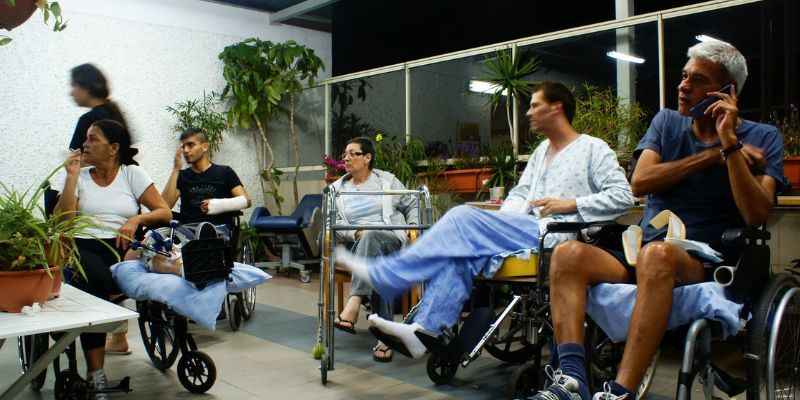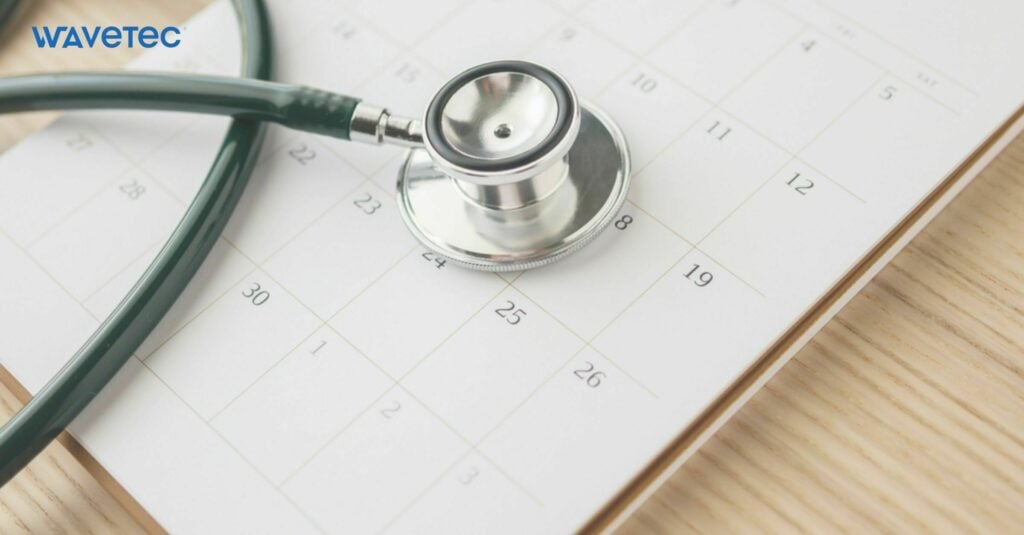Hospital sign-in sheets, a longstanding tradition in healthcare settings, prompt an examination of their effectiveness.
Positioned at reception, these sheets request individuals to document details like name, date of birth, and purpose of visit. However, their limitations spark an inquiry into why hospital sign-in sheets are impractical.
In the intricate healthcare sector, effective visitor tracking is vital for the smooth flow of administrative processes. Despite their perceived importance, sign-in sheets face scrutiny for privacy concerns, illegibility, and limited data scope.
Technological alternatives, such as digital check-in systems, offer a more efficient and accurate way to collect patient information, addressing the drawbacks.
Automation reduces errors and enhances overall efficiency, positively impacting the patient experience by streamlining administrative processes.
In exploring Why Hospital Sign-In Sheets Are Not Effective through this article, it will become clear that modern alternatives are crucial in improving efficiency and patient satisfaction in healthcare settings.
Purpose of Hospital Sign-In Sheets
Hospital sign-in sheets traditionally record visitor information, capturing essential details like names, dates of birth, and reasons for visits. However, examining Why Hospital Sign-In Sheets Are Not Effective reveals inherent challenges.
Their traditional role in recording visitor information is essential but needs to improve to ensure security and safety.
The practice of jotting down sensitive details on paper compromises privacy, contributing to the overall ineffectiveness of these sheets. Why Medical Sign-In Sheets Are Not Effective stems from the potential risks this traditional approach poses.
Regarding security and safety considerations, sign-in sheets are susceptible to issues such as illegible handwriting and the visibility of sensitive information to others in the waiting area.
These vulnerabilities underscore the need for a more secure and private method of collecting patient information. Exploring the limitations sheds light on adopting modern alternatives to enhance the effectiveness of medical sign-in procedures.
Limitations of Hospital Sign-In Sheets
While traditionally used for recording visitor information, hospital sign-in sheets present limitations that hinder the goal of increasing operational efficiency.
Examining Why Hospital Sign-in Sheets Are Not Effective reveals their drawbacks, prompting a closer look at alternative solutions for streamlined and secure data collection in healthcare settings.
- Inaccuracy In Capturing Real-Time Data
- Privacy Concerns for Patients and Visitors
- Potential For Errors in Transcription
- Lack Of Real-Time Data
- Limited Analytics and Reporting
- Privacy Concerns
- Cumbersome For Staff
1. Inaccuracy in Capturing Real-Time Data
In the context of hospitals and their record-keeping sheets, this is a significant challenge, impacting operations and patient experience negatively.
Imagine hospitals using detailed sheets to keep track of patients and resources, similar to a map. However, these sheets may need to be updated more quickly, posing limitations for hospitals.
These information sheets are essential tools for hospitals to manage their operations. But it’s like having an incomplete map when these tools need to receive the latest information promptly. This challenge emphasizes the importance of robust business analytics for hospitals.
Business analytics involves improving data capture methods and ensuring hospitals receive the most accurate and timely information.
In the fast-paced healthcare environment, outdated or incorrect information can become a hurdle. Hospitals can operate more efficiently by leveraging business analytics and improving patient care.
2. Privacy Concerns for Patients and Visitors

Privacy concerns for patients and visitors arise due to the ineffectiveness of traditional medical sign-in sheets.
These sheets, intended to track arrivals, often display sensitive information openly, compromising confidentiality. The flaw lies in the inherent design of these sign-in sheets, which fail to protect personal data.
When patients and visitors sign in, their names and details become visible to others in the waiting area, potentially violating privacy regulations. This exposure to sensitive information can lead to discomfort and anxiety among individuals seeking healthcare services. Additionally, it raises concerns about unauthorized access to personal health information.
To address these privacy issues, healthcare facilities must reconsider using traditional sign-in sheets and explore more secure alternatives.
Advanced technologies and electronic systems can offer a more confidential and efficient approach, protecting patients’ and visitors’ privacy while maintaining the necessary record-keeping protocols.
3. Potential for Errors in Transcription
When we examine why medical sign-in sheets are ineffective, both highlight a common flaw in healthcare information management. Despite the intended purpose of streamlining patient data, these sign-in sheets introduce a significant vulnerability: the potential for transcription errors.
As patients manually provide their details, reliance on handwritten information opens the door to inaccuracies, whether due to illegible penmanship or incomplete entries.
These transcription mistakes compromise the accuracy of patient records, hindering healthcare professionals in delivering optimal care.
Moreover, the risk of misinterpretation or oversight amplifies when transferring handwritten information to electronic health records or other digital systems. These transcription errors undermine the efficiency of medical processes and pose risks to patient safety.
The inherent risk of inaccuracies within the transcription process calls into question the overall effectiveness of hospital and medical sign-in sheets as reliable tools for precise information management.
4. Lack of Real-Time Data
The inherent need for real-time data underscores why hospital sign-in sheets are ineffective, particularly in the context of people counting. Traditional sign-in sheets rely on manual entry, making it challenging to provide instant updates on the number of people within a healthcare facility.
This limitation can impede timely decision-making and resource allocation. In contrast, modern solutions incorporating people-counting technology offer real-time insights into facility occupancy, enhancing operational efficiency.
The absence of real-time data in conventional sign-in processes highlights a crucial gap in responsiveness, hindering healthcare facilities from promptly addressing evolving situations and optimizing their resources to benefit both staff and patients.
5. Limited Analytics and Reporting

The ineffectiveness of medical sign-in sheets is notably attributed to their limited analytics and reporting capabilities. These paper-based and manual sheets must offer real-time insights critical for informed decision-making in healthcare settings.
The absence of comprehensive analytics hinders healthcare providers from accessing timely data on patient flow, resource allocation, and overall operational efficiency. This deficiency impacts the ability to make informed decisions promptly, potentially compromising the quality of patient care.
Upgrading to more advanced systems with robust analytics features becomes imperative to overcome these shortcomings.
By embracing technologies enabling real-time reporting, healthcare facilities can enhance operational agility, make data-driven decisions, and improve patient outcomes and organizational performance.
6. Privacy Concerns
Why hospital sign-in sheets are ineffective is a question faced due to a primary challenge—overarching privacy concerns.
Whether utilized in hospitals or medical facilities, traditional sign-in sheets often rely on paper-based methods, jeopardizing patient confidentiality by exposing sensitive information to anyone nearby.
Patients rightfully worry about their data being visible to others, leading to potential breaches of privacy regulations.
This lack of discretion poses a substantial barrier to effective healthcare administration. Transitioning to more secure, digital solutions is crucial to address these concerns. Electronic sign-in systems with robust privacy measures provide a more confidential patient experience.
Prioritizing protecting sensitive information is not just a matter of compliance but a fundamental aspect of providing patient-centered and trustworthy healthcare services.
By acknowledging and mitigating privacy concerns associated with Why Medical Sign-In Sheets Are Not Effective, healthcare providers can enhance patient trust and uphold the integrity of their services.
7. Cumbersome for Staff
Using traditional sign-in sheets in patient waiting areas is cumbersome for staff, particularly when managing patient flow. Paper-based sign-in processes require manual handling, slowing the check-in procedure and creating inefficiencies for the staff.
The need to decipher handwritten information can lead to errors, affecting the accuracy of patient records and causing further delays.
When discussing patient flow management, these manual methods must be revised, where efficiency is paramount. Adopting digital solutions for check-ins streamlines the process, allowing staff to focus on more critical aspects of patient care.
Electronic sign-in systems enhance the overall efficiency of the check-in process and contribute to better time management and resource allocation, ultimately improving the quality of healthcare services.
Recognizing the drawbacks of traditional sign-in sheets and embracing technology can significantly alleviate the burden on staff, leading to more effective patient flow management within healthcare facilities.
Final Words
In examining the drawbacks outlined in why hospital sign-in sheets are not practical, it becomes evident that these traditional methods are fraught with limitations.
From privacy concerns jeopardizing patient confidentiality to the inefficiencies making the process cumbersome for staff, the need for a transformative shift is evident.
Integrating modern solutions for patient flow management and adopting electronic sign-in systems emerges as a strategic imperative.
Healthcare providers can address these challenges head-on by embracing technology, ensuring a more secure and efficient environment. Electronic systems mitigate privacy concerns and streamline processes, making them less cumbersome for staff and optimizing patient flow management.
In conclusion, the move towards digital solutions is not just a modernization effort but a crucial step in enhancing overall healthcare quality and efficiency.
BOOK A FREE DEMO





